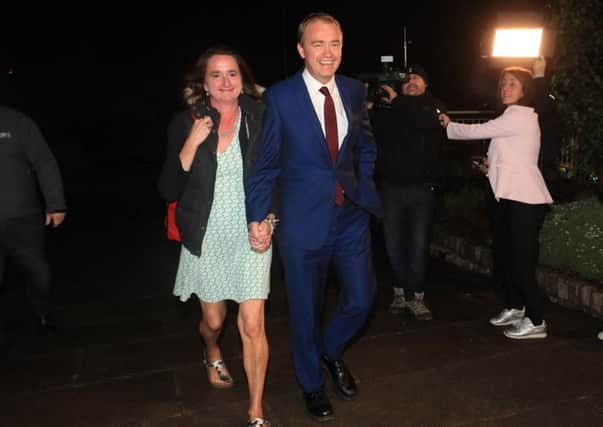Lib Dems face more tough questions after weak show


The party went into the election buoyed by its by-election win in Richmond Park and encouraging signs from a string of council by-elections over the last year.
But the local elections a month before the General Election offered warning signs that the Lib Dem resurgence may have hit the buffers, including a net loss of two seats on North Yorkshire County Council.
Advertisement
Hide AdAdvertisement
Hide AdHaving reached 13 per cent in some polls last year, the Lib Dems went into polling day struggling to reach eight per cent.
The party started the campaign with eyes on seats including Hull West and Harrogate and Knaresborough but by the time votes were being cast the focus was on holding on to Leeds North West and Sheffield Hallam and leader Tim Farron’s own seat of Westmorland and Lonsdale.
An early visit to Leeds and a final-week appearance in Sheffield by Tim Farron were the only times the Lib Dems’ national campaign touched the region.
The party emerged from the last election with just eight seats as voters deserted them after their five years in coalition with the Conservatives.
Advertisement
Hide AdAdvertisement
Hide AdIn the aftermath of the EU referendum result and Labour’s decision to back the Conservatives’ in triggering Article 50, the Lib Dems were left with the Greens as the only distinctive pro-Remain parties in England.
That provoked a surge in membership, fuelled the triumph in Richmond and saw the party pick up surprise victories in by-elections for council seats in Rotherham and Sheffield.
Paradoxically, the EU referendum result the party had campaigned against appeared to be fuelling its rapid recovery.
But the loss of more than 40 council seats in May suggested the Lib Dems’ plan to be the voice of the ‘angry remainers’ may have reached its limits.
Advertisement
Hide AdAdvertisement
Hide AdWhile 48 per cent of voters in 2016 backed Remain, there are signs that many of those have lost hope of reversing the result.
Prior to the coalition, the Lib Dems made themselves distinctive by championing income tax rises to pay for public services.
In the last year, the party has seized on the opportunity afforded by Brexit but now it finds itself searching for the policy that distinguishes it in the minds of voters.
And despite overseeing some gains, there will be questions too over Mr Farron’s own future.
Advertisement
Hide AdAdvertisement
Hide AdHis popularity among Lib Dem activists made him the right man to pick them up and dust them down after their 2015 drubbing.
But he has failed to connect with the wider public in the way that Nick Clegg, Charles Kennedy and Paddy Ashdown did before him.
The Lib Dems may decide they need another figure to lead them through the next stage of their recovery.